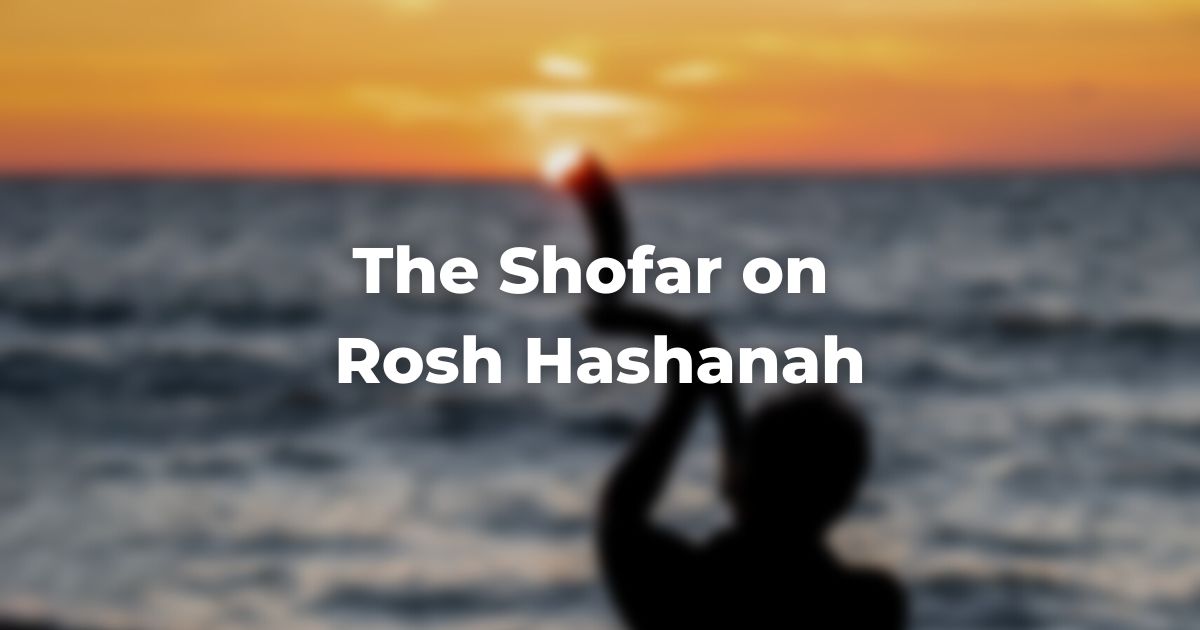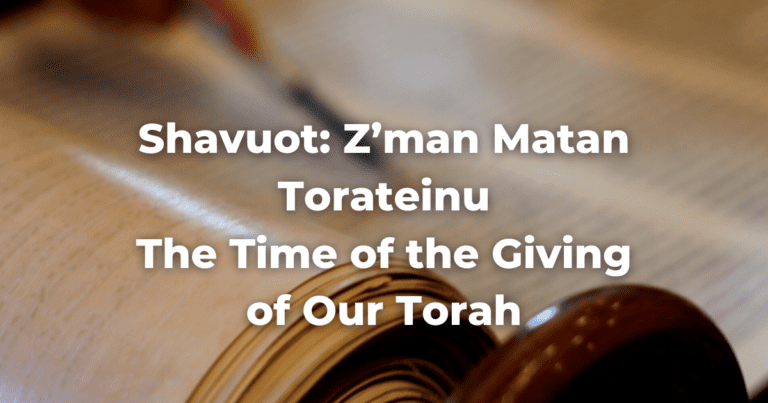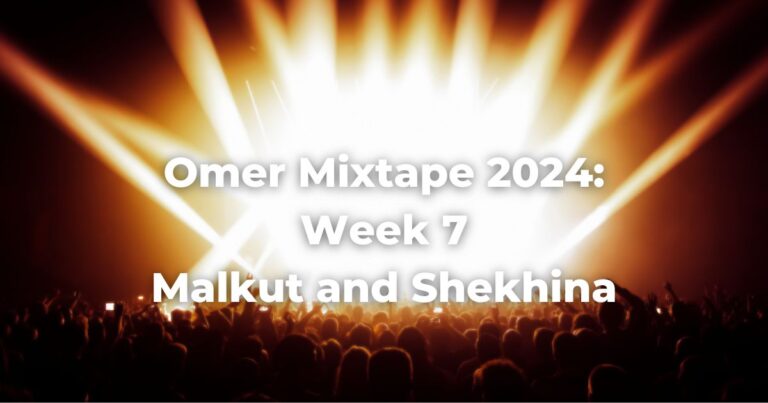In some ways, the sounding of the shofar is the most characteristic mitzvah of Rosh Hashanah. Indeed, one of the scriptural names of this holiday (found at Numbers 29:1) is yom t’ruah, the Day of Sounding the Shofar.
The mitzvah, however, need not be fulfilled personally by blowing the shofar oneself, but simply by hearing it blown.
What is a Shofar?
A shofar is the natural horn of a kosher animal and, with the exception of a cow or an ox, any kosher animal’s horn may be used (SA Orach Chayim 586:1).
Customarily, however, a ram’s horn is used in order to connect the sounding of the shofar with the story of the Binding of Isaac (Genesis 22), the Torah reading for the second day of Rosh Hashanah, and specifically with its climactic detail: when Abraham’s hand is stayed, his attention is drawn to a ram caught in the thicket and he offers this animal as a sacrifice instead.
By using the horn of a kosher animal, we may fulfill the mitzvah of blowing the shofar. But by using a ram’s horn, we subtly remind God of the supreme merit of our forefather Abraham.
The TalmudReferring to one of two collections, the Jerusalem and Babylonian Talmuds, edited in the 6th century, that contains hundreds of years of commentary, discussion, and exploration of the ideas in the Mishnah. One could describe it as Mishnah + Gemara = Talmud Read more also explains that the shofar should be curved, not straight. This is intended to symbolize the spirit of humility appropriate for the season of national repentance (BT Rosh Hashanah 26b).
Effects of the Ritual
Although the sound of the shofar is meant to pierce the heart and ought not require any elaborate explanation, this has not stopped generations of rabbis and scholars from speculating about the reason the ritual is so effective.
The most famous of these is probably Maimonides’ comment to the effect that the shofar calls to each of us and says:
“Awake, you sleepers from your sleep. Arouse you slumberers from your slumber and ponder your deeds; remember your Creator and return to God in repentance. Do not be like those who miss the truth in pursuit of shadows and waste their years seeking vanity. Look well to your souls and consider your deeds; turn away from your wrong ways and improper thoughts.”
(MT Hilkhot Teshuvah 3:4) cited in Maḥzor Lev Shalem p.118
Generations of the Jewish people have found the sounding of the shofar to be one of the peak moments of the entire Jewish year.
As such, it resonates with generations’ worth of associations, bringing contemporary worshipers back to the wilderness in which the Israelites wandered and to the foot of Mount Sinai where they received God’s TorahRefers to the first five books of the Hebrew Bible, the Tanakh, also called the Five Books of Moses, Pentateuch or the Hebrew equivalent, Humash. This is also called the Written Torah. The term may also refer to teachings that expound on Jewish tradition. Read more as the sound of the shofar was heard from on high (Exodus 19:19).
Its sound does not solely pierce through the generations, however. It also pierces the layers of indifference that separate even the most willing supplicant from embracing wholehearted, unfettered faith in God. To respond to the sound of the shofar requires neither formal training nor any knowledge of complex Hebrew texts, only the most basic of any supplicant’s tools: an open heart and a willing spirit.
Blowing the Shofar
Although the mitzvah can be fulfilled simply by hearing the shofar blown, it is an art and a great privilege, however, to be the ba·al t’ki·ah or the ba·alat t’ki·ah, that is, the individual chosen to sound the shofar for the larger community.
Before the notes are sounded, a special blessing acknowledging God as the Author of the commandment to sound the shofar is recited, followed by the She-heḥeyyanu (also written as shehechianu) blessing.
Tradition dictates that there are to be one hundred separate blasts of the shofar on each day of Rosh Hashanah (cf. the comment of the Tosafot to BT Rosh Hashanah 33b, s.v. sheiur t’ruah).
The notes are divided into three types: the tekiah (a long, strong blast), the shevarim (a series of three short broken blasts), and the t’ruah (nine short staccato notes). The t’ki·ah, the three-part shevarim, and the nine-part t’ruah should each be of similar length.
These are the only three notes, but they are combined in various ways to result in the one hundred requisite blasts.
When to Blow the Shofar
Different communities, however, have different customs as to how and when the notes are sounded to arrive at the desired total.
The first time the shofar is sounded is right after the Torah service at the conclusion of the haftarah and its blessings.
The shofar is also sounded during each of the three parts of the repetition of the Amidah during the Musaf Service.
Some congregations sound a final set of blasts in the Full Kaddish at the end of the service to arrive at the total of one hundred.
An alternate custom included as an option in some Conservative prayerbooks for the High Holidays is to blow the shofar during each of the three sections of the silent recitation of the Musaf Amidah and then again during the repetition.
The shofar is such an important mitzvah that those who are ill or incapacitated and cannot come to synagogue to hear the blasts should still arrange to have someone sound the shofar for them at home or in the hospital. Most synagogues are glad to assist in arranging volunteers to help fulfill this important mitzvah.
Shabbat and the Shofar
The shofar is not sounded when Rosh Hashanah coincides with Shabbat (BT Rosh Hashanah 29b). Since Rosh Hashanah is always a two-day holiday, however, the mitzvah will never be completely eliminated in any given year.
If the shofar is such an important mitzvah, one might ask why it does not supersede the laws that govern Shabbat rest. And this is even more pointed a question when we note that the sounding of the shofar would not actually involve any direct violation of the laws of Shabbat, but was forbidden only out of the fear that it might lead indirectly to such a violation.
Indeed, it was precisely because the mitzvah was so important and so beloved that the rabbis feared that a community without a shofar might arrange for someone to retrieve one from some distant place, thus carrying and possibly traveling on Shabbat. (Dispensing with the sounding of the shofar when the festival coincided with Shabbat eliminated even the possibility of such an eventuality.)
And thus the ancients taught a valuable and profound lesson: that Shabbat takes precedence even over something as important as sounding the shofar on Rosh Hashanah.
As a result, congregations that faithfully omit the shofar service when Rosh Hashanah falls on Shabbat experience a renewed awareness of the ineffable sanctity of Shabbat and the unreasonableness of risking its even inadvertent neglect.
Adapted with permission from The Observant Life.
Authors
-

The Observant Life: The Wisdom of Conservative Judaism for Contemporary Jews distills a century of thoughtful inquiry into the most profound of all Jewish questions: how to suffuse life with timeless values, how to remain loyal to the covenant that binds the Jewish people and the God of Israel, and how to embrace the law while retaining an abiding sense of fidelity to one’s own moral path in life. Written in a multiplicity of voices inspired by a common vision, the authors of The Observant Life explain what it means in the ultimate sense to live a Jewish life, and to live it honestly, morally, and purposefully. The work is a comprehensive guide to life in the 21st Century. Chapters on Jewish rituals including prayer, holiday, life cycle events and Jewish ethics such as citizenship, slander, taxes, wills, the courts, the work place and so much more.
View all posts -







